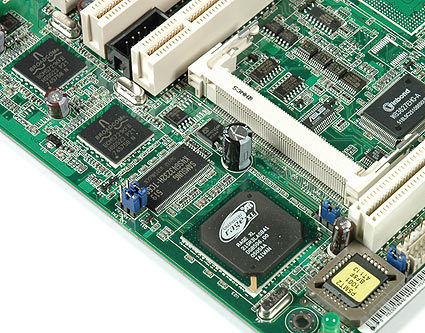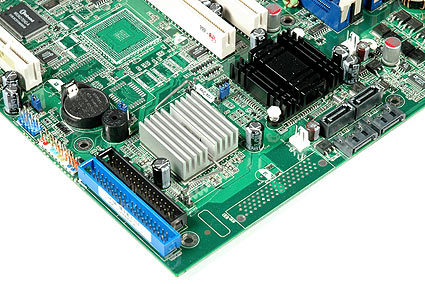The Server Primer, Part 1
Motherboard, Continued
Server and workstation motherboards often come with integrated network controllers. These can be the same components as those used on consumer motherboards, you’ll usually find more sophisticated hardware, which allows TCP/IP offloading or other features to improve network performance and intelligence.
This particular board comes with four DDR2 memory slots, a single Socket 775 processor socket for a Xeon or Core 2 processor (there is also a single-socket version), one 32-bit PCI slot, one x16 PCI Express slots for graphics or a powerful mass storage controller, and two PCI-X 133 slots. Two Broadcom Gigabit Ethernet controllers take care of networking connectivity. You may have noticed that this board carries an ATI graphics processor. This is an extremely outdated part, but it’s good enough to display the basic desktop or command line information needed for a server operating system.
All of the remaining interfaces and components are typically shared with consumer hardware: southbridge parts, UltraATA/100 or Serial ATA controllers, voltage regulators, mechanical components, and so on. The only difference, again, is validation, which means that manufacturers check their hardware across other products and ideally, publish compatibility listings.
ATI’s RageXL is many years old and doesn’t offer any 3D capabilities, but they aren’t needed for servers; most of the time, no one looks at the screen anyway.
Get Tom's Hardware's best news and in-depth reviews, straight to your inbox.

Patrick Schmid was the editor-in-chief for Tom's Hardware from 2005 to 2006. He wrote numerous articles on a wide range of hardware topics, including storage, CPUs, and system builds.


